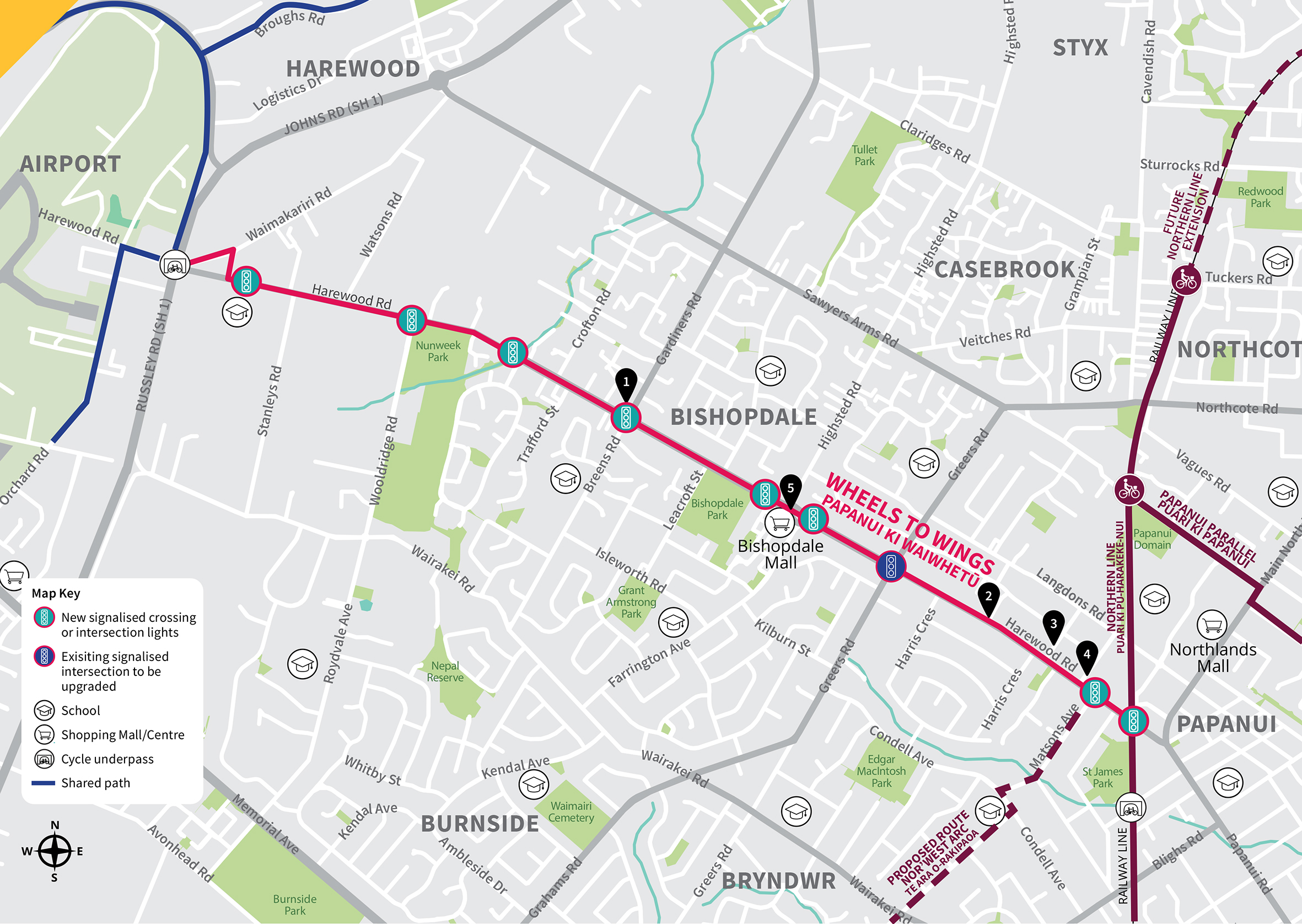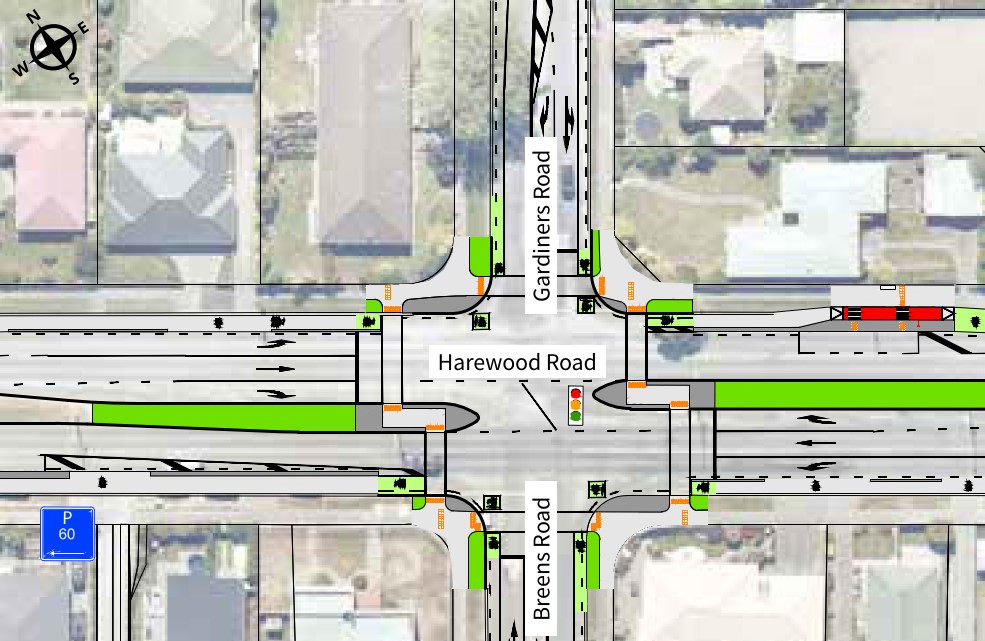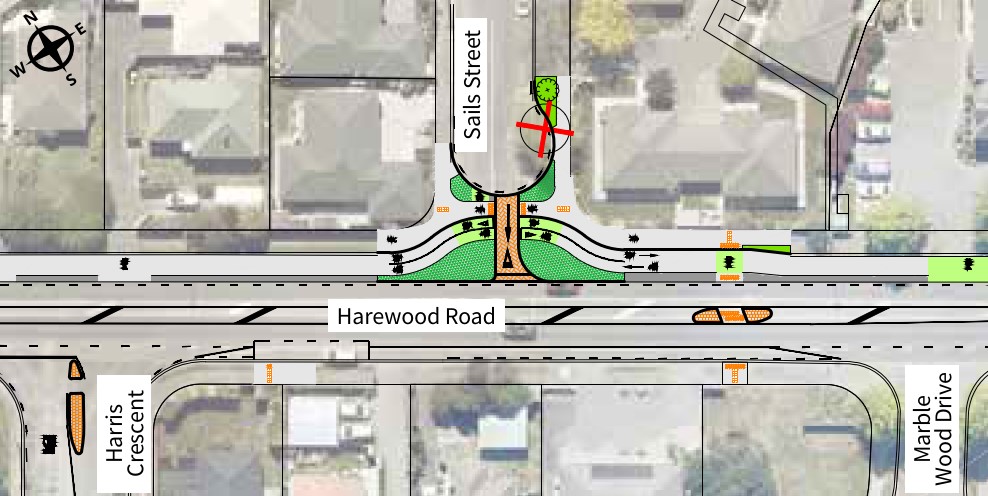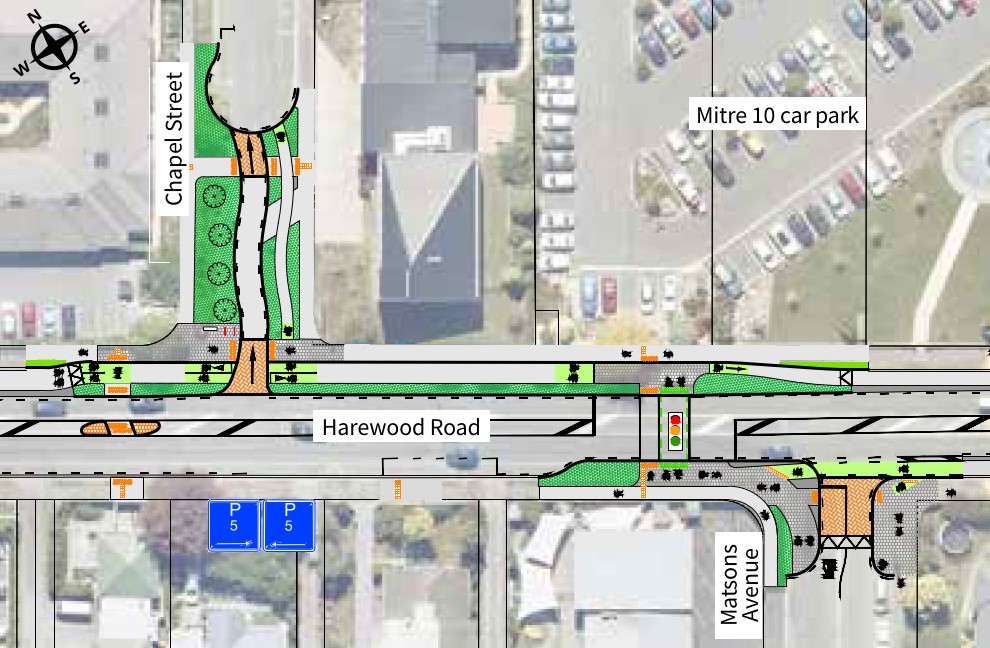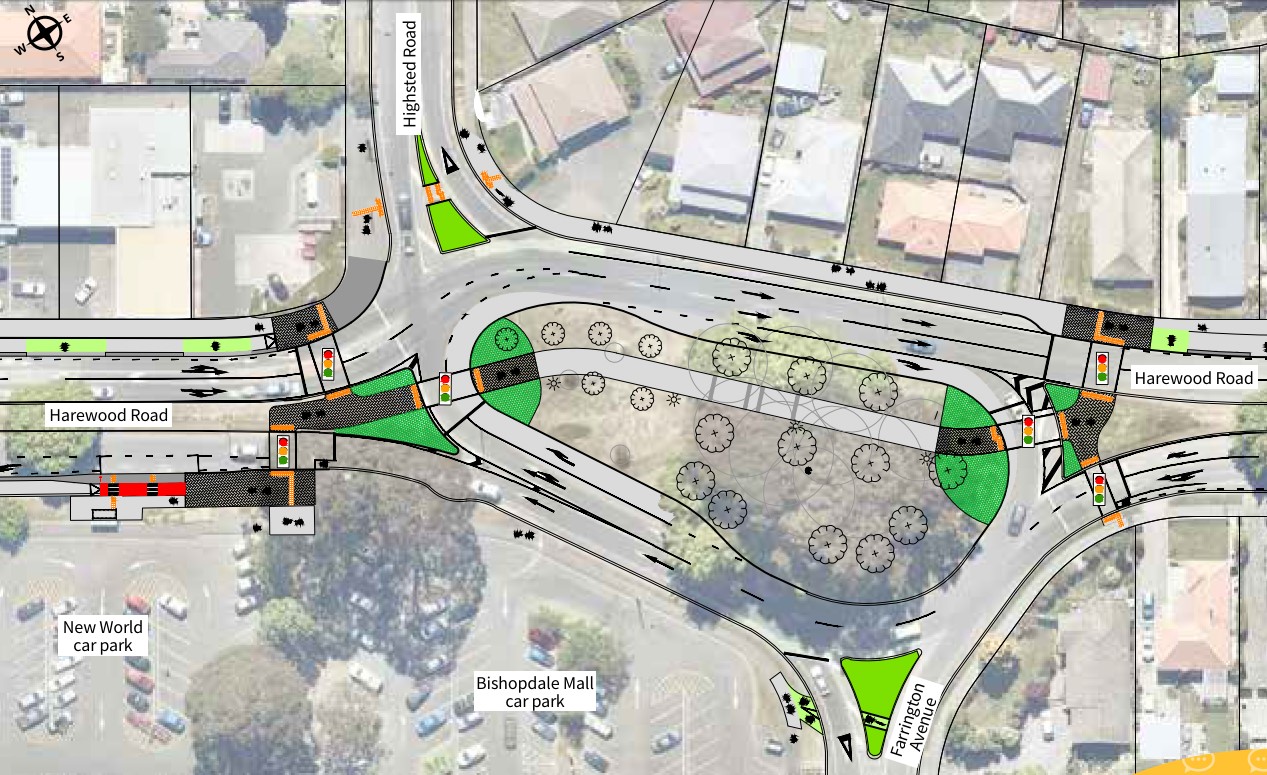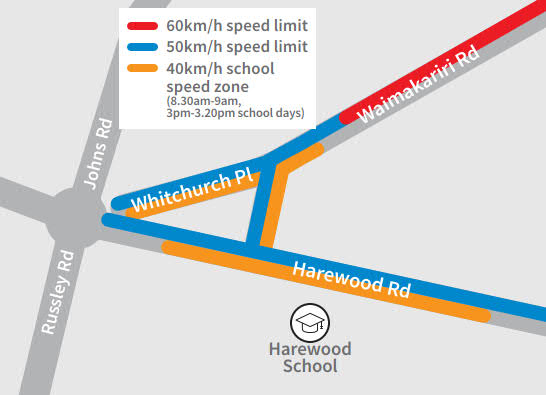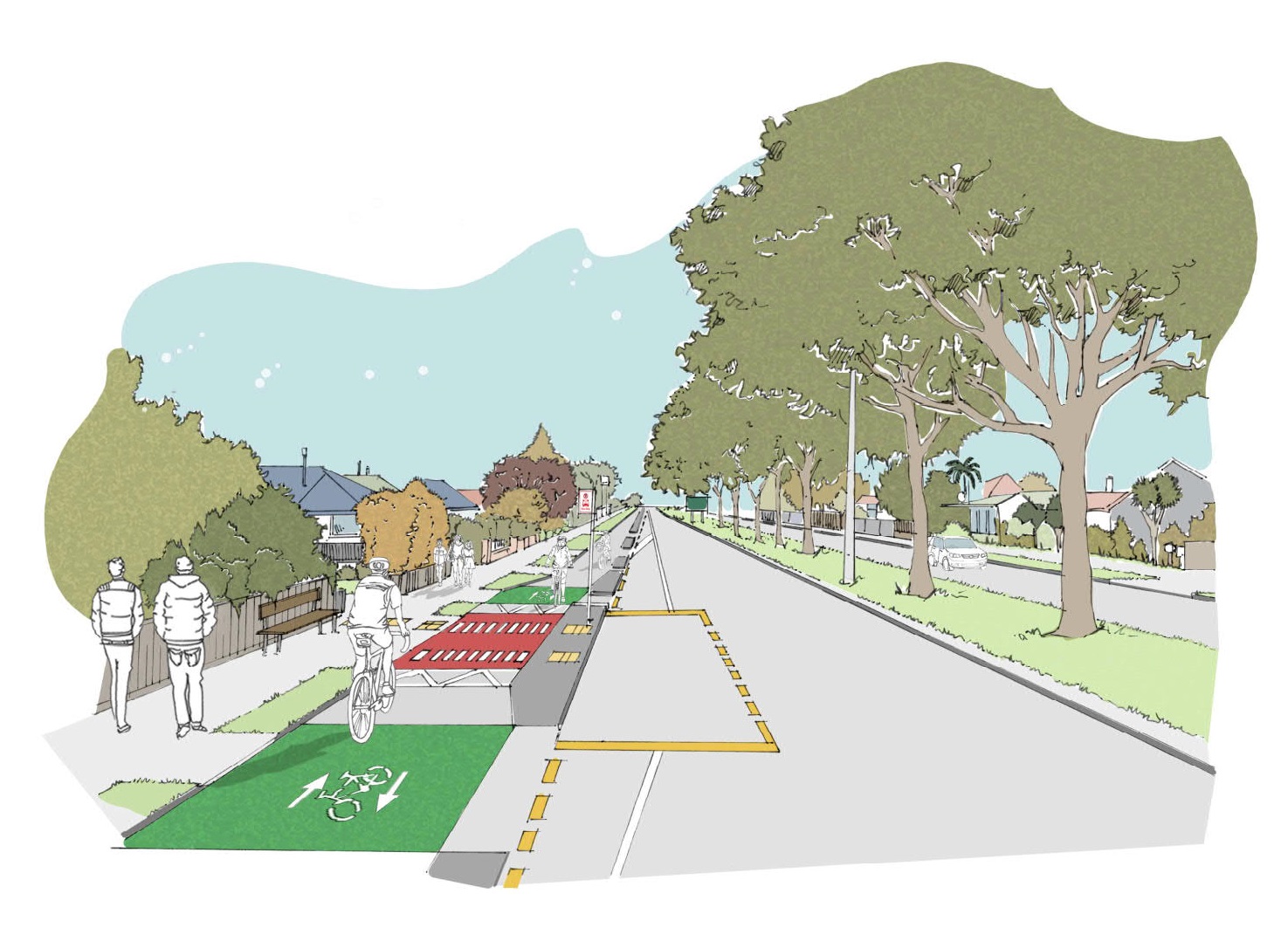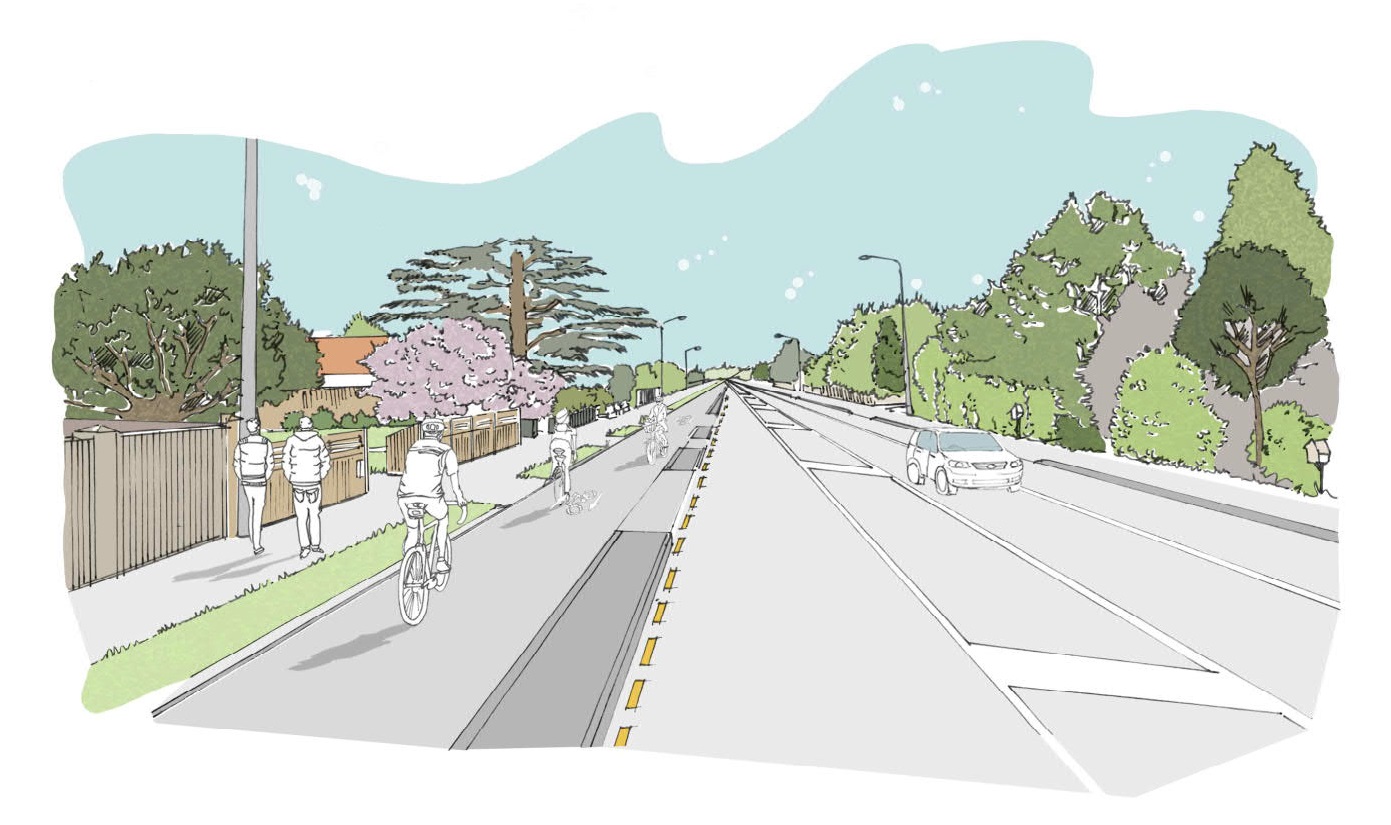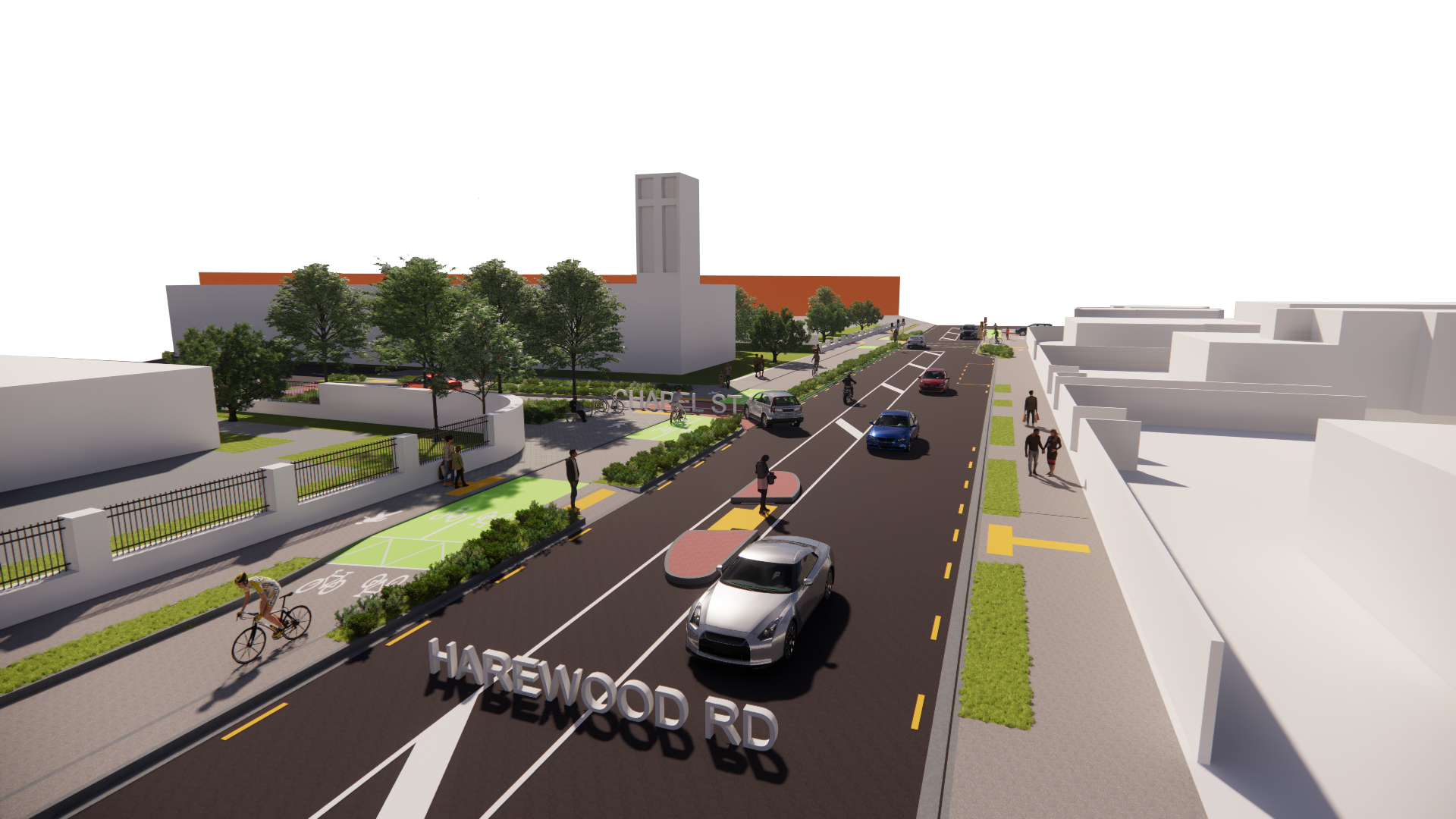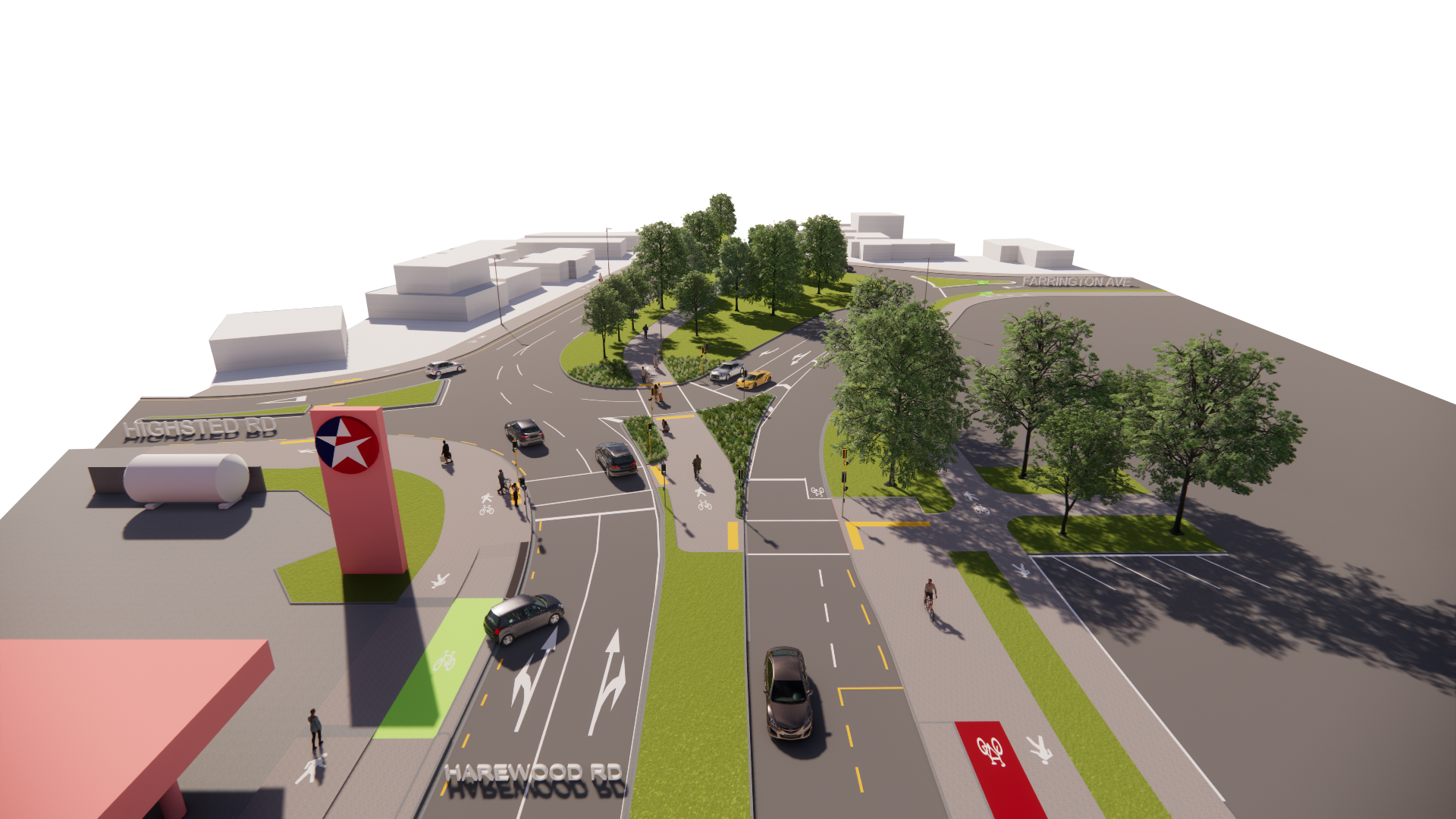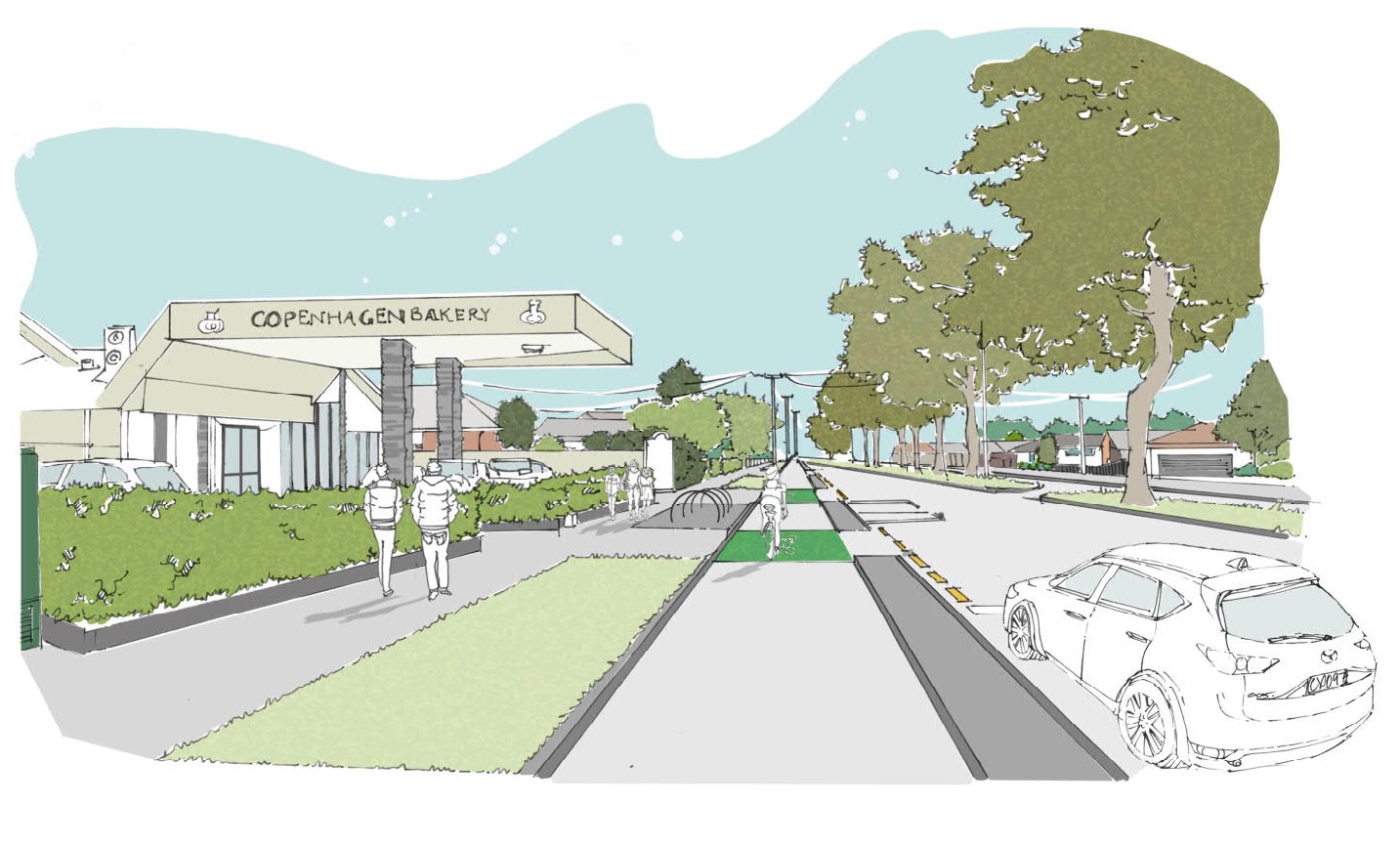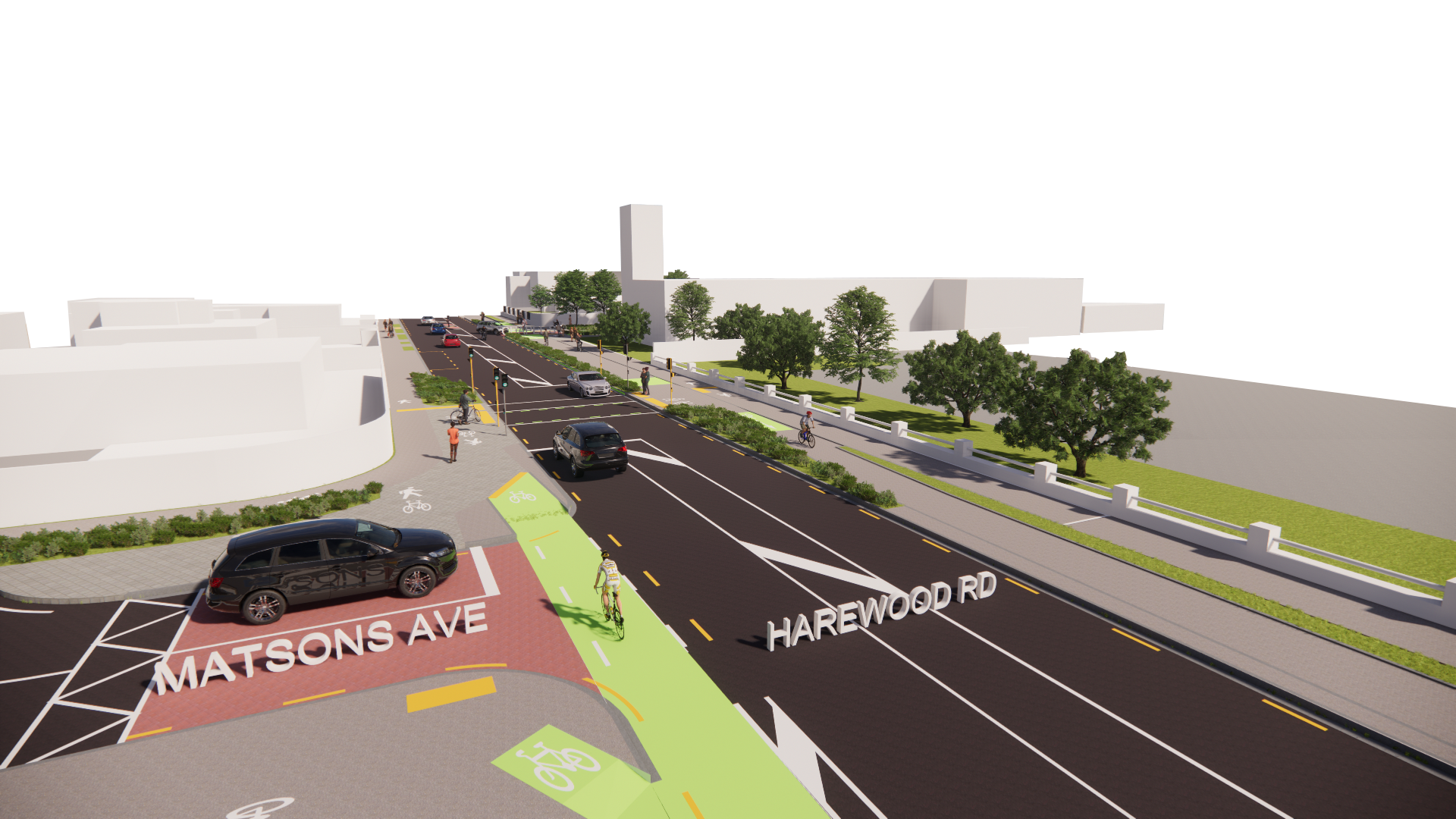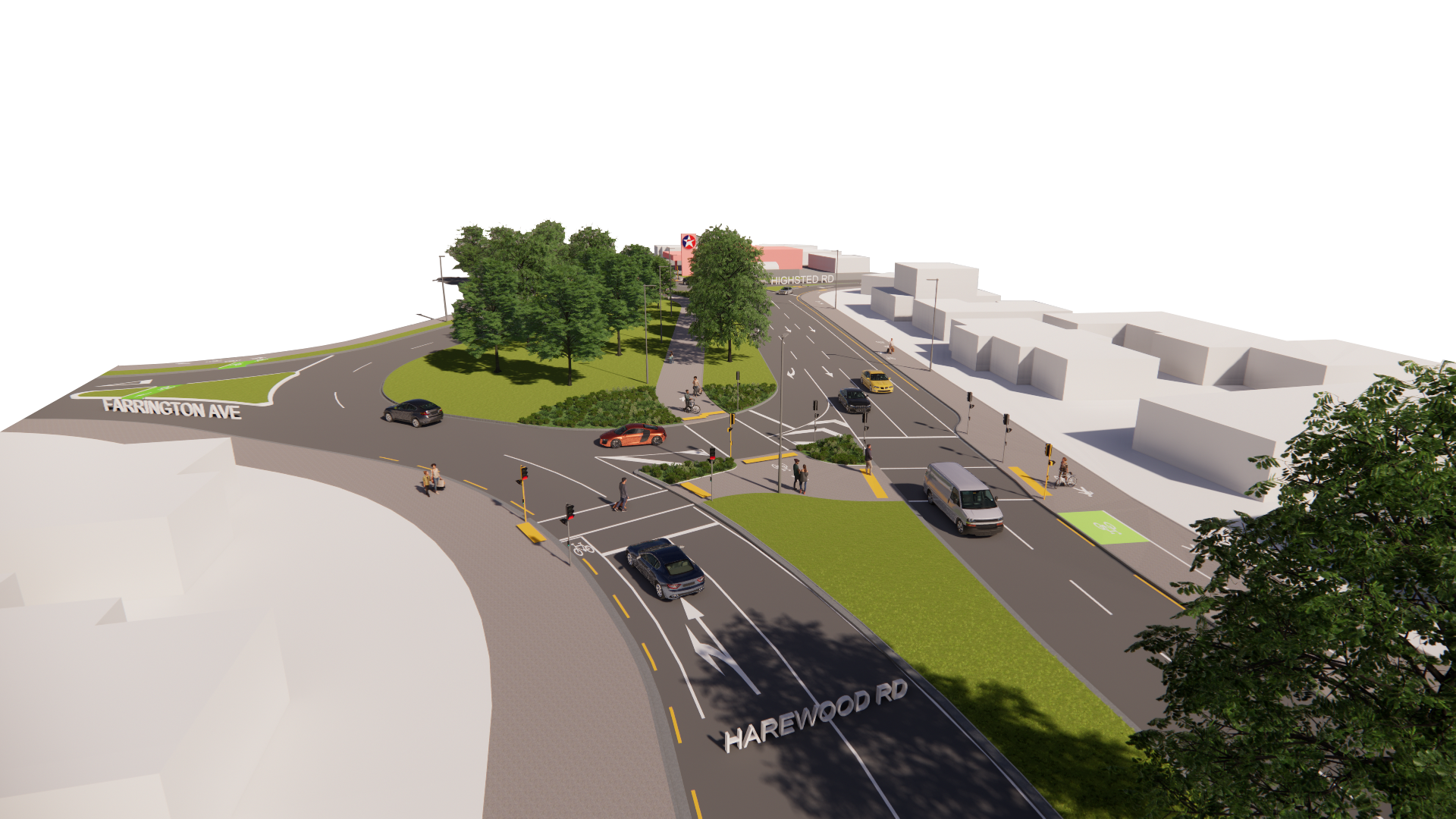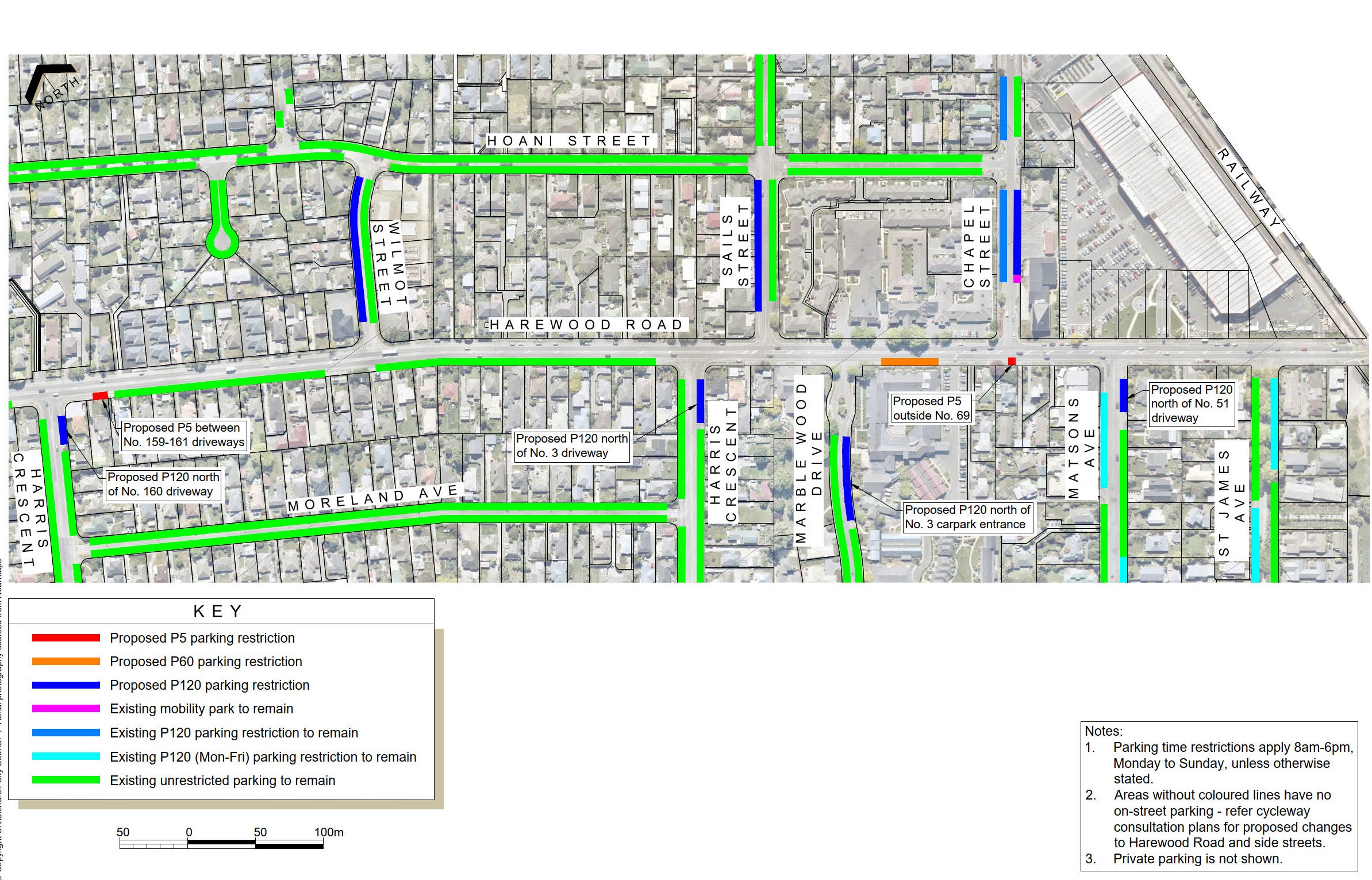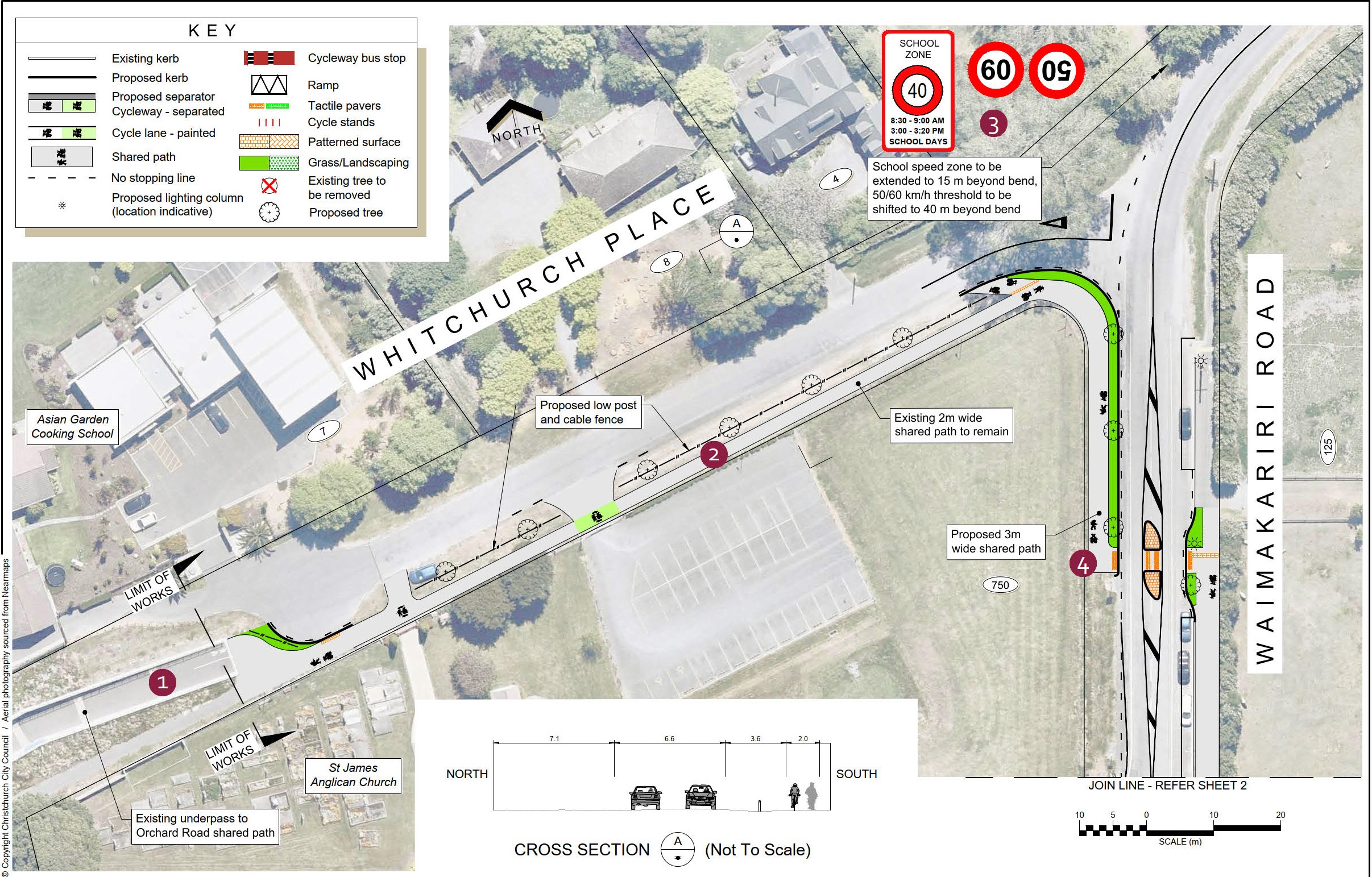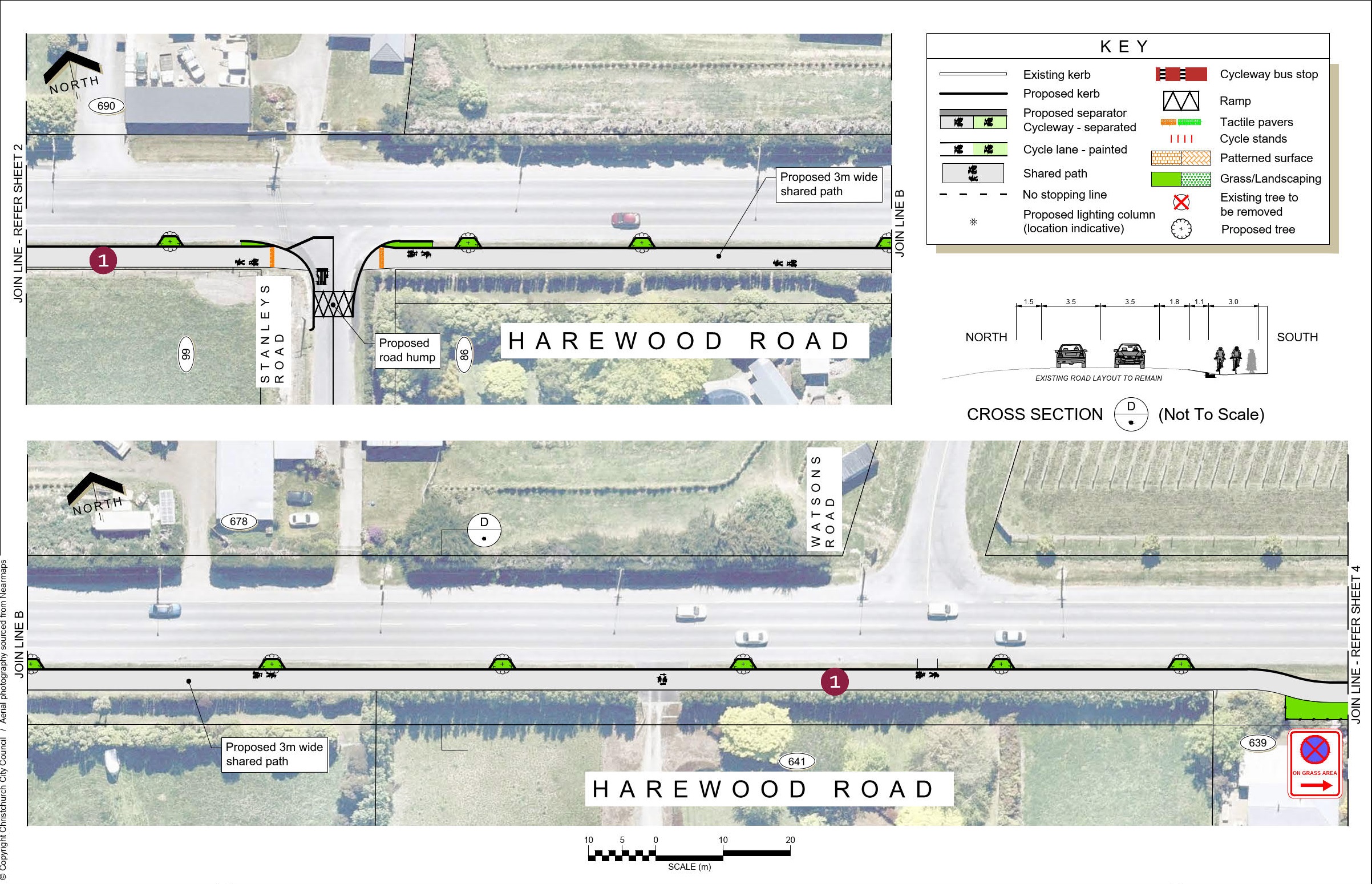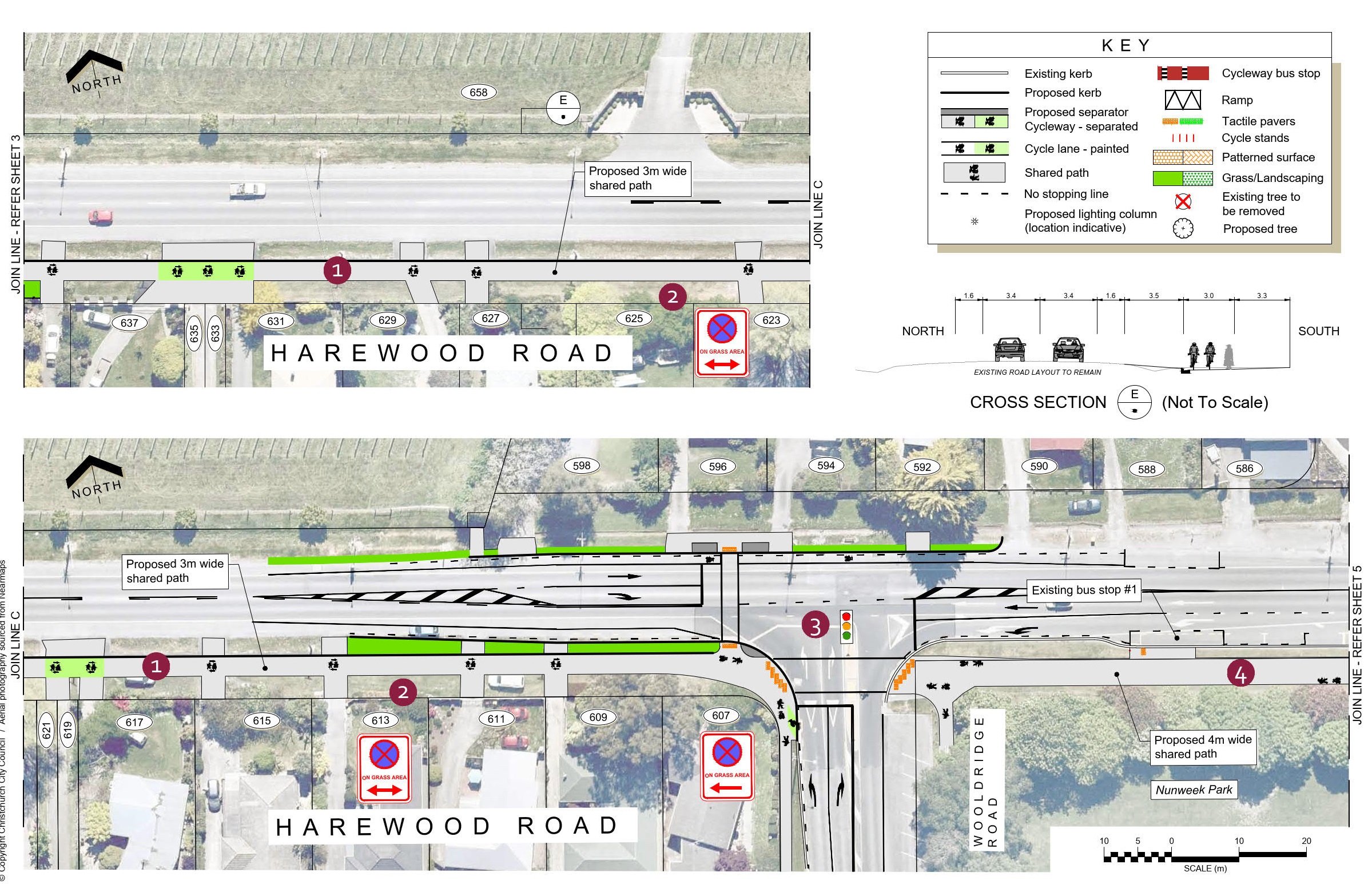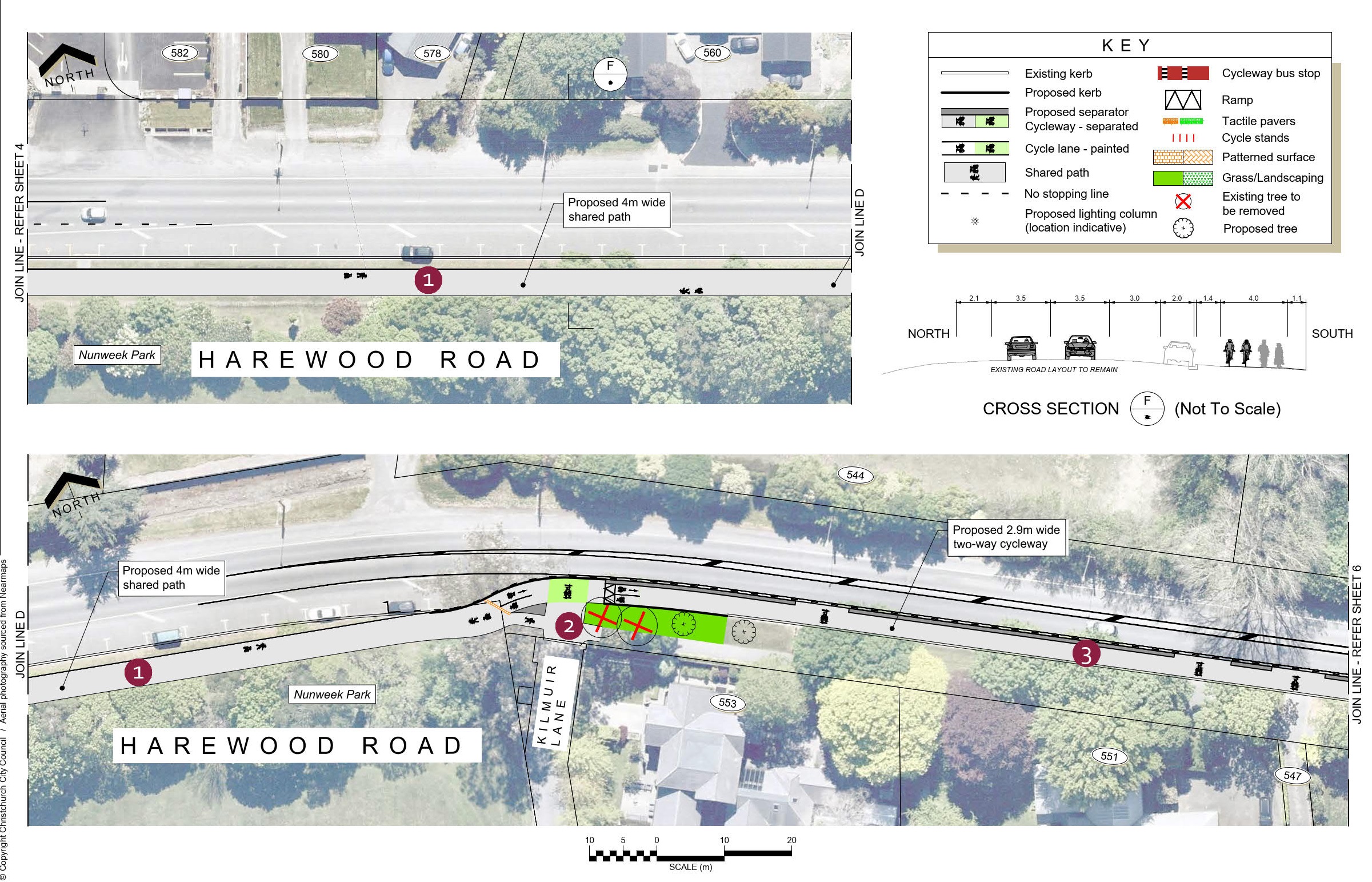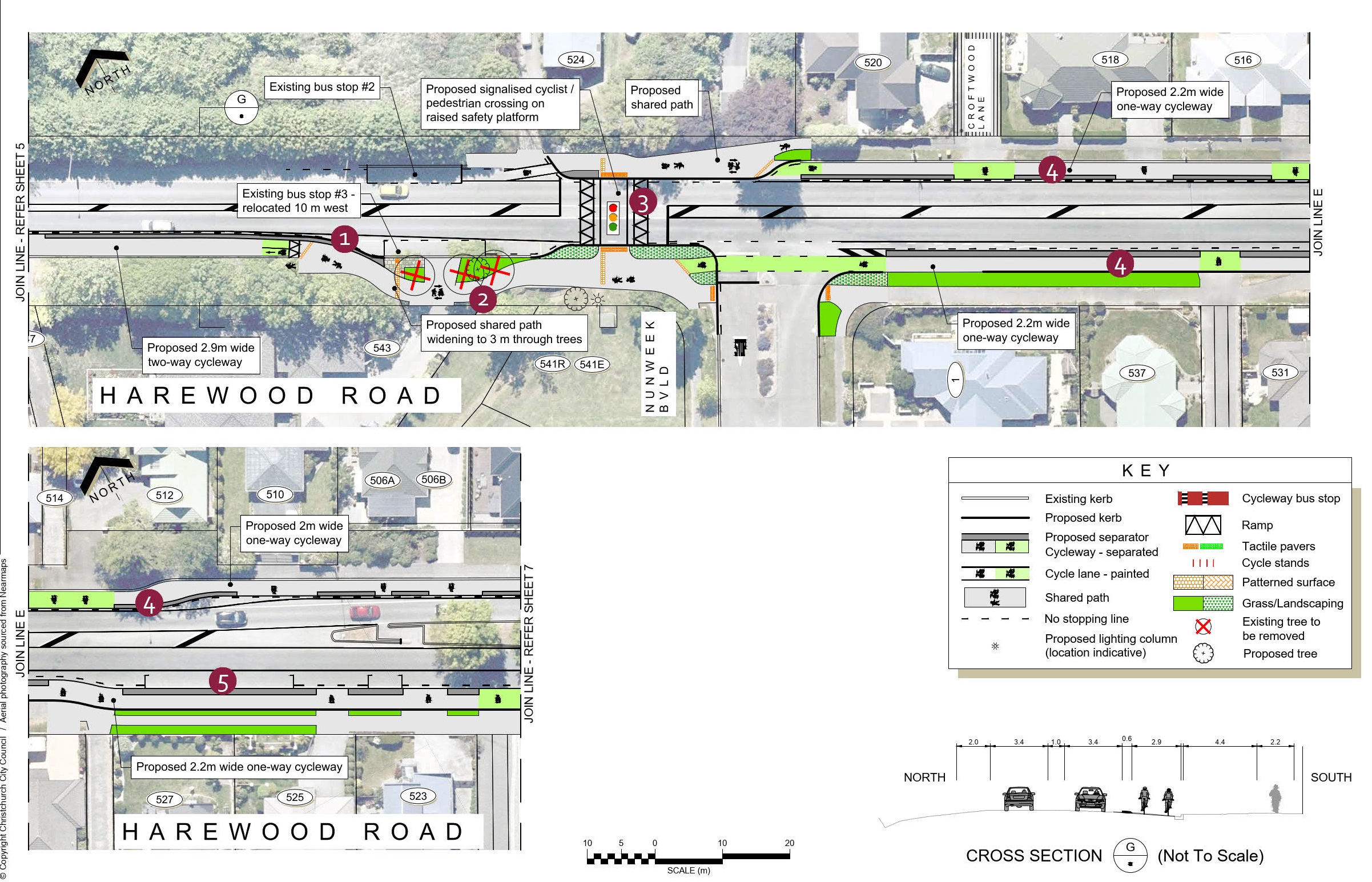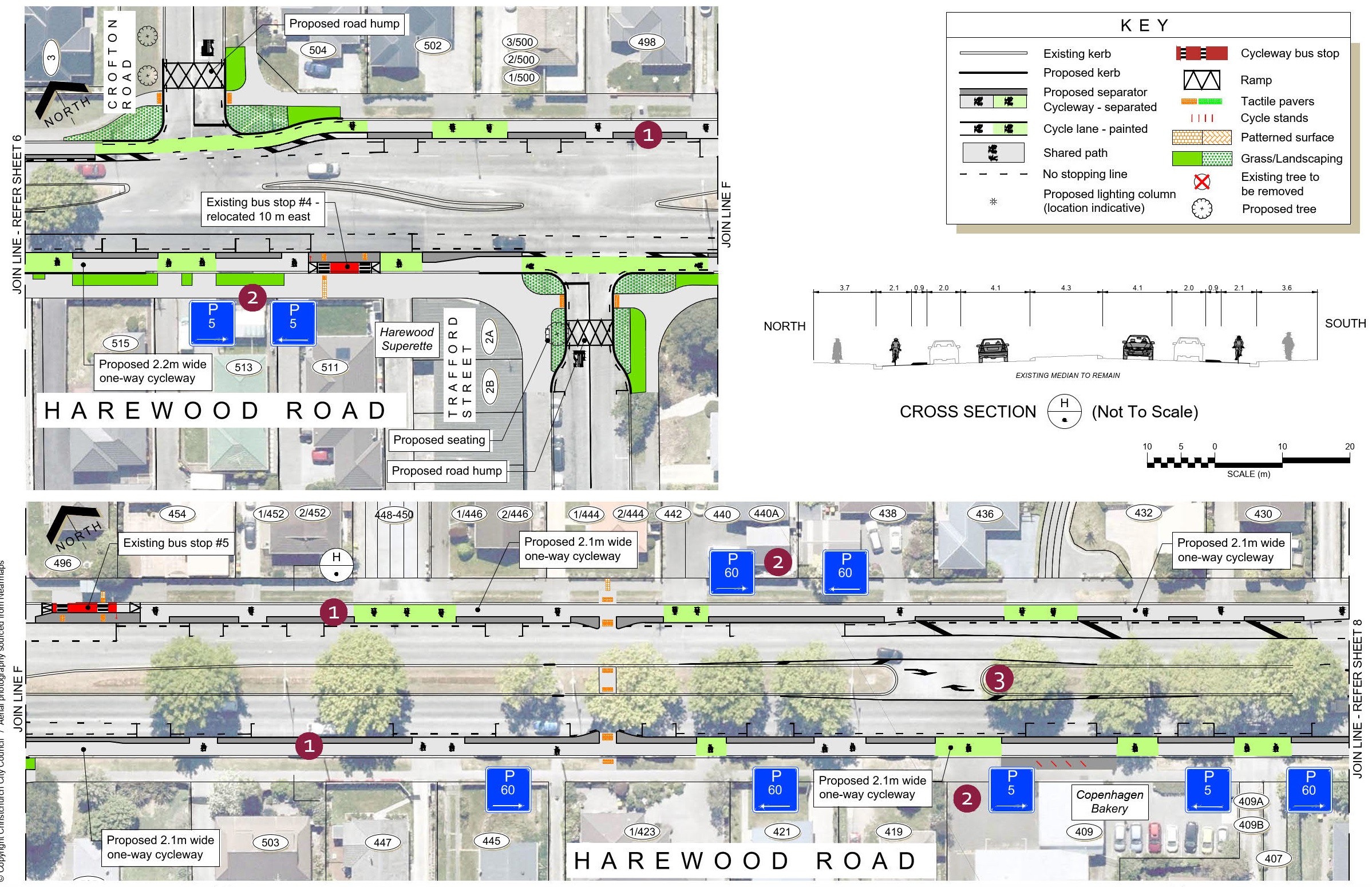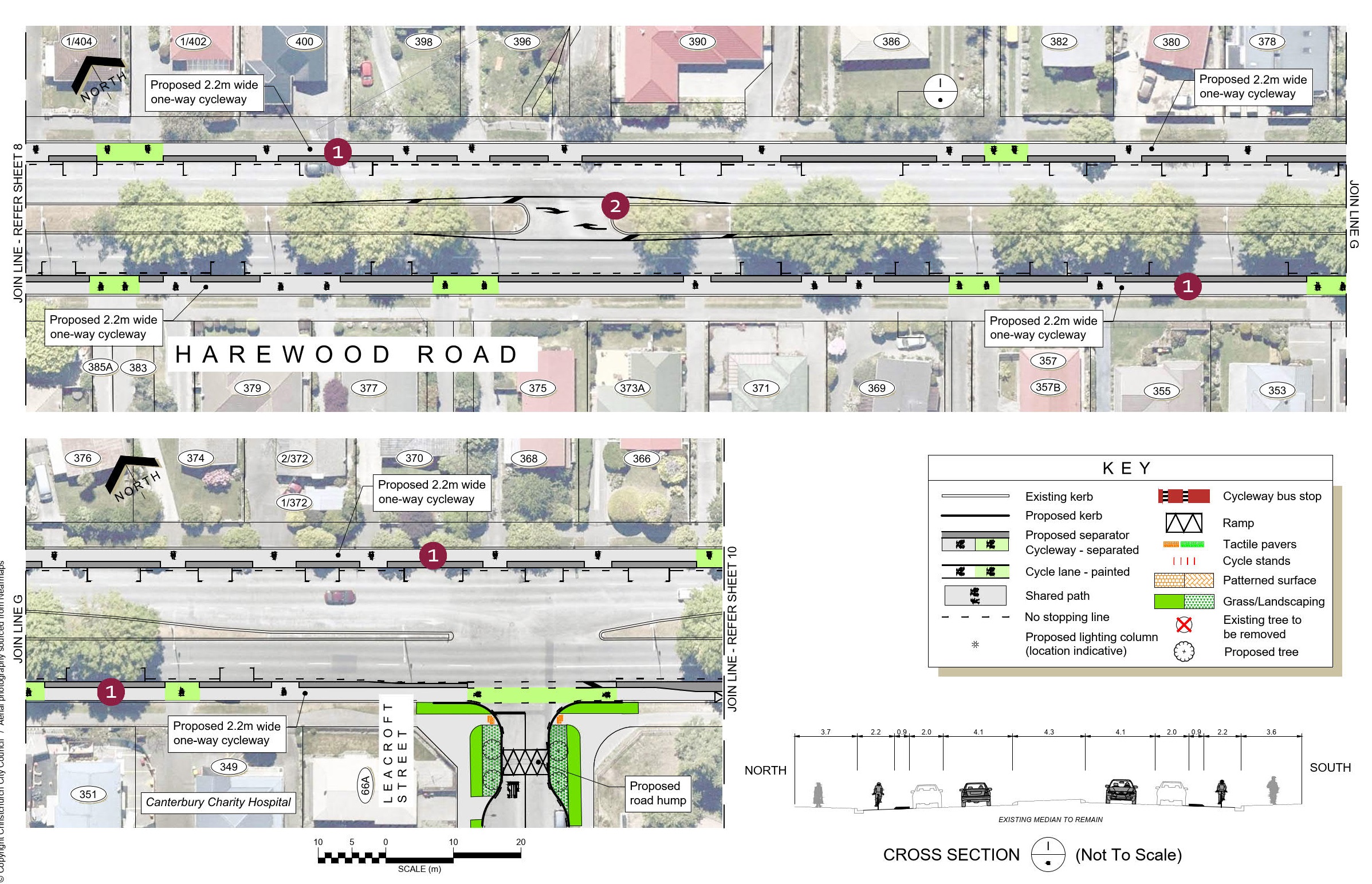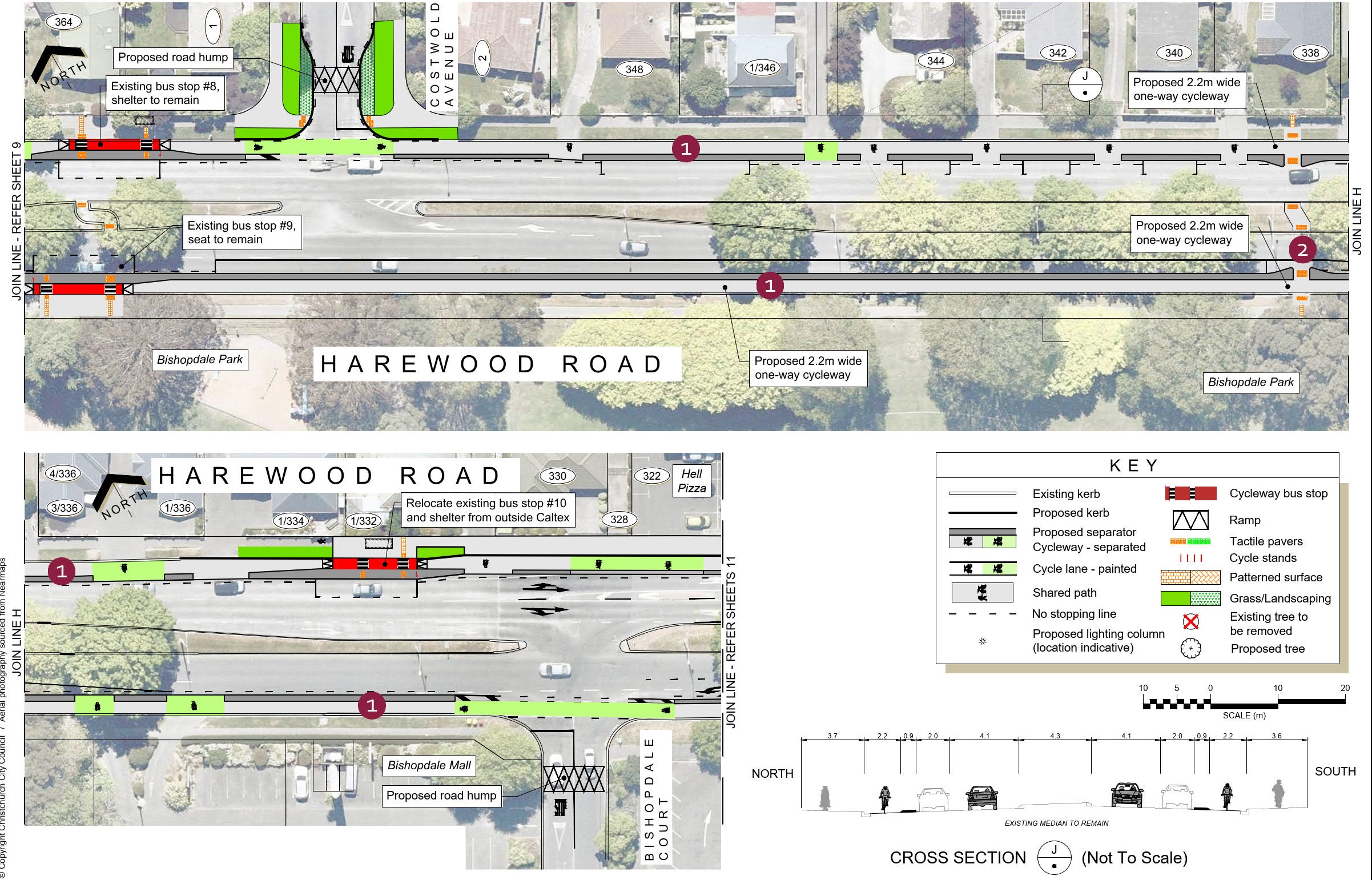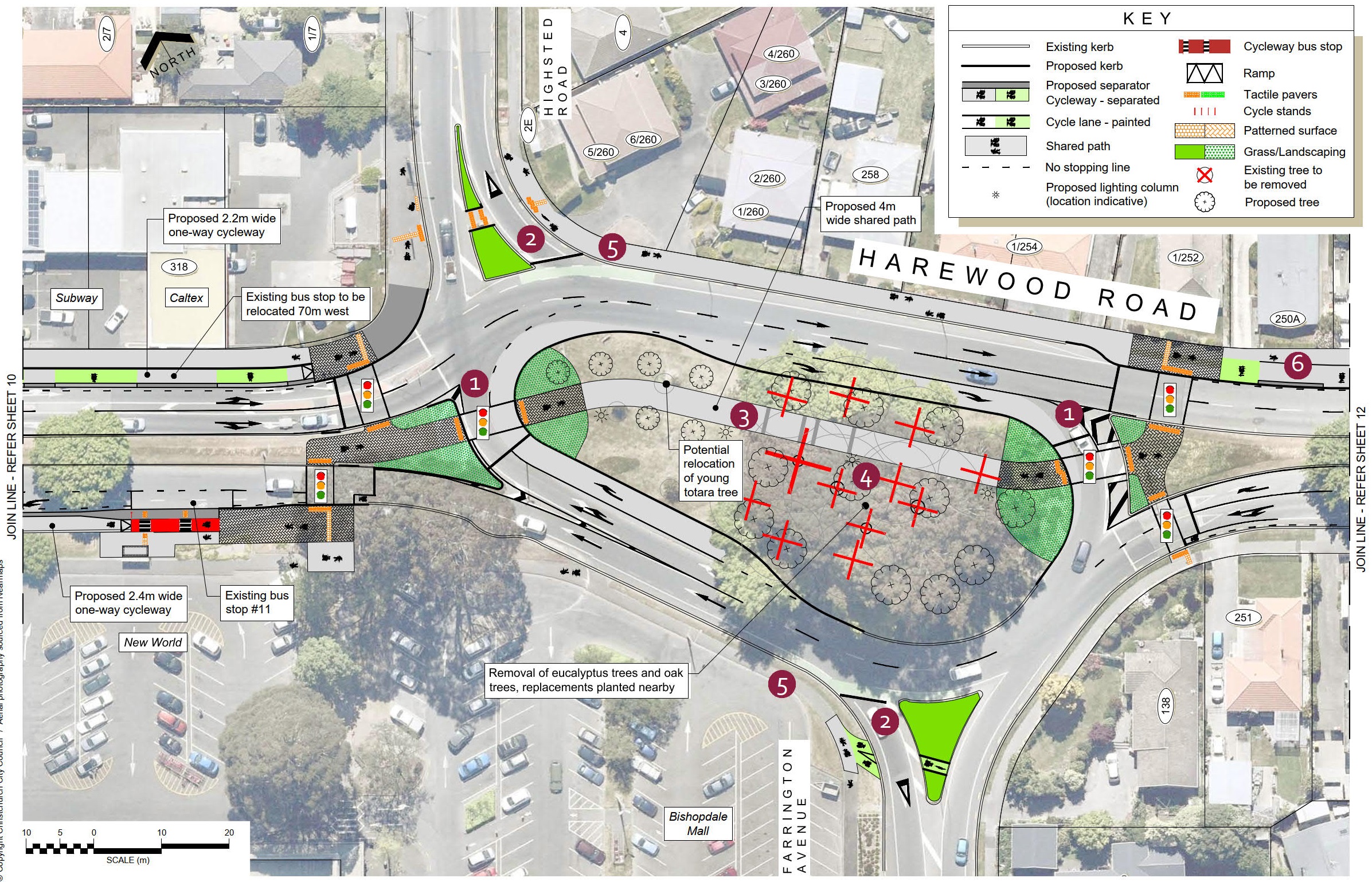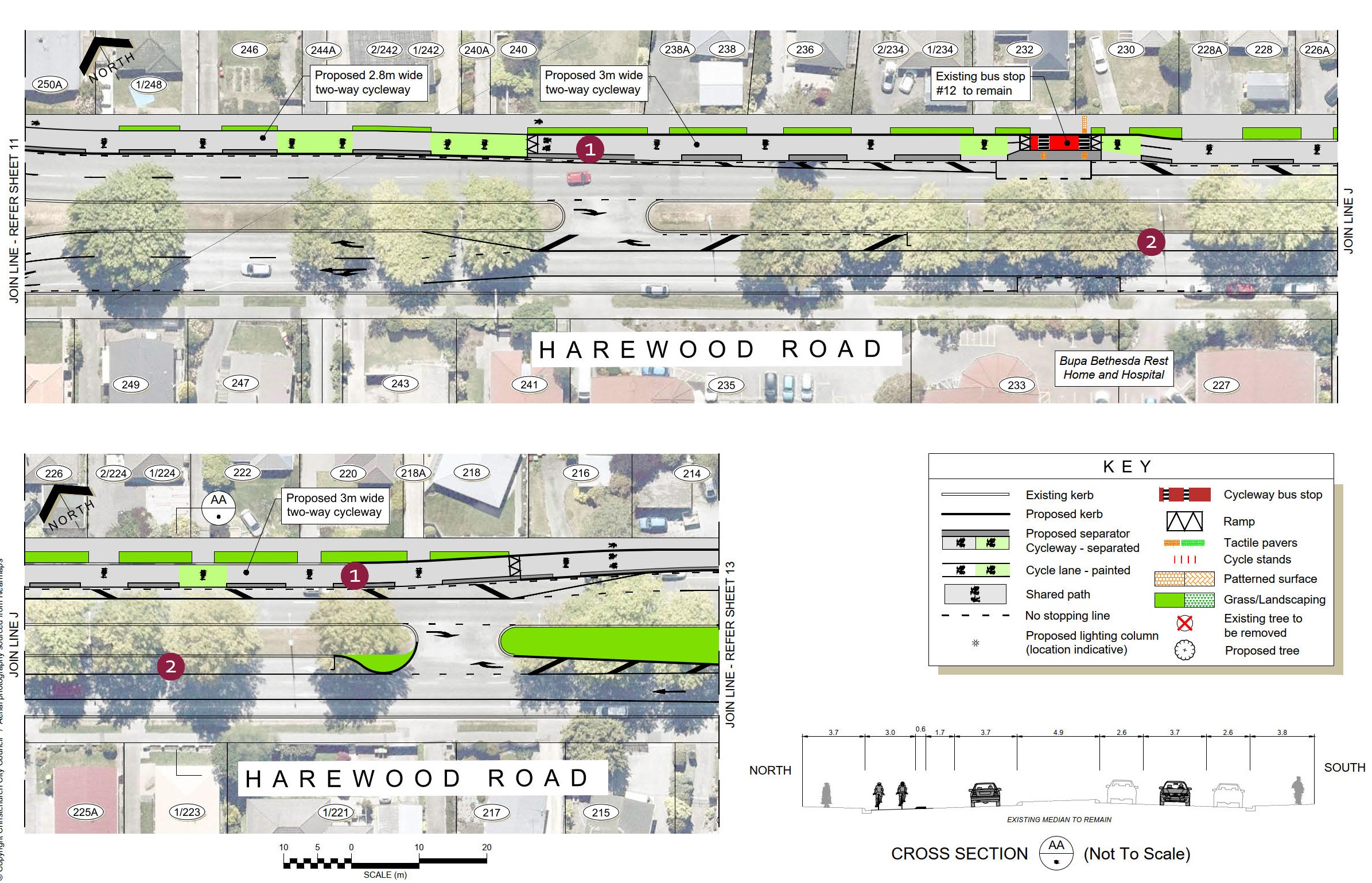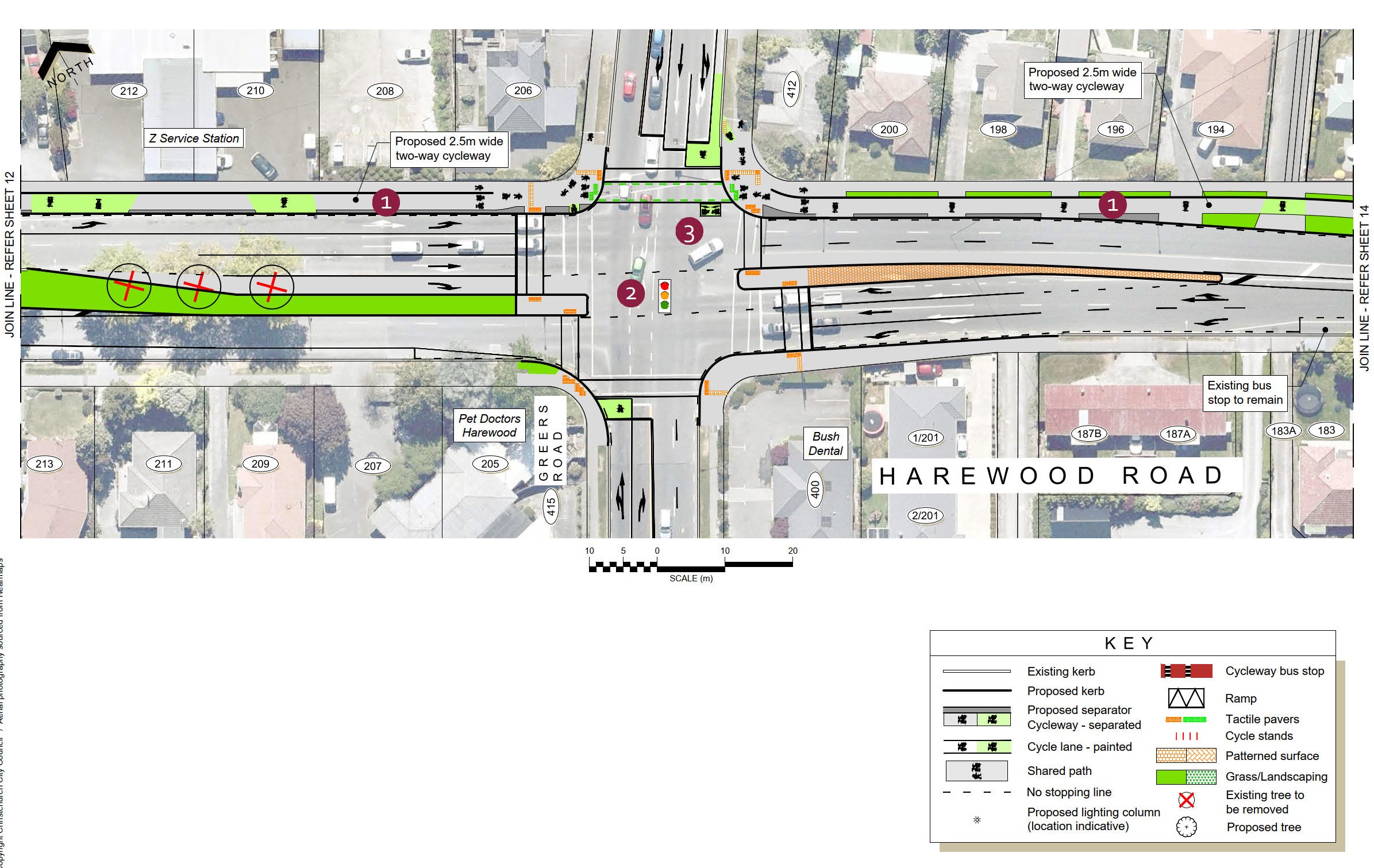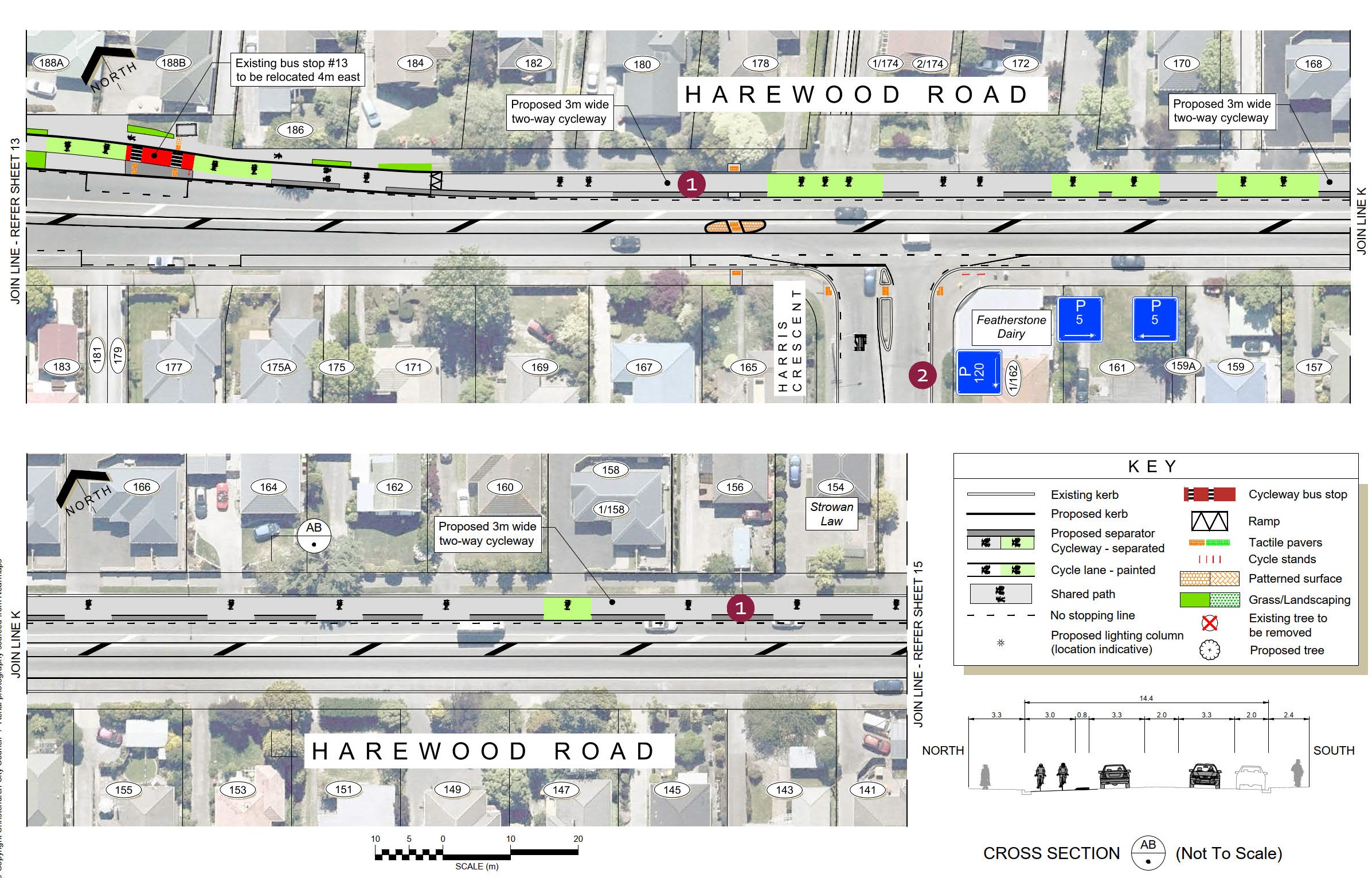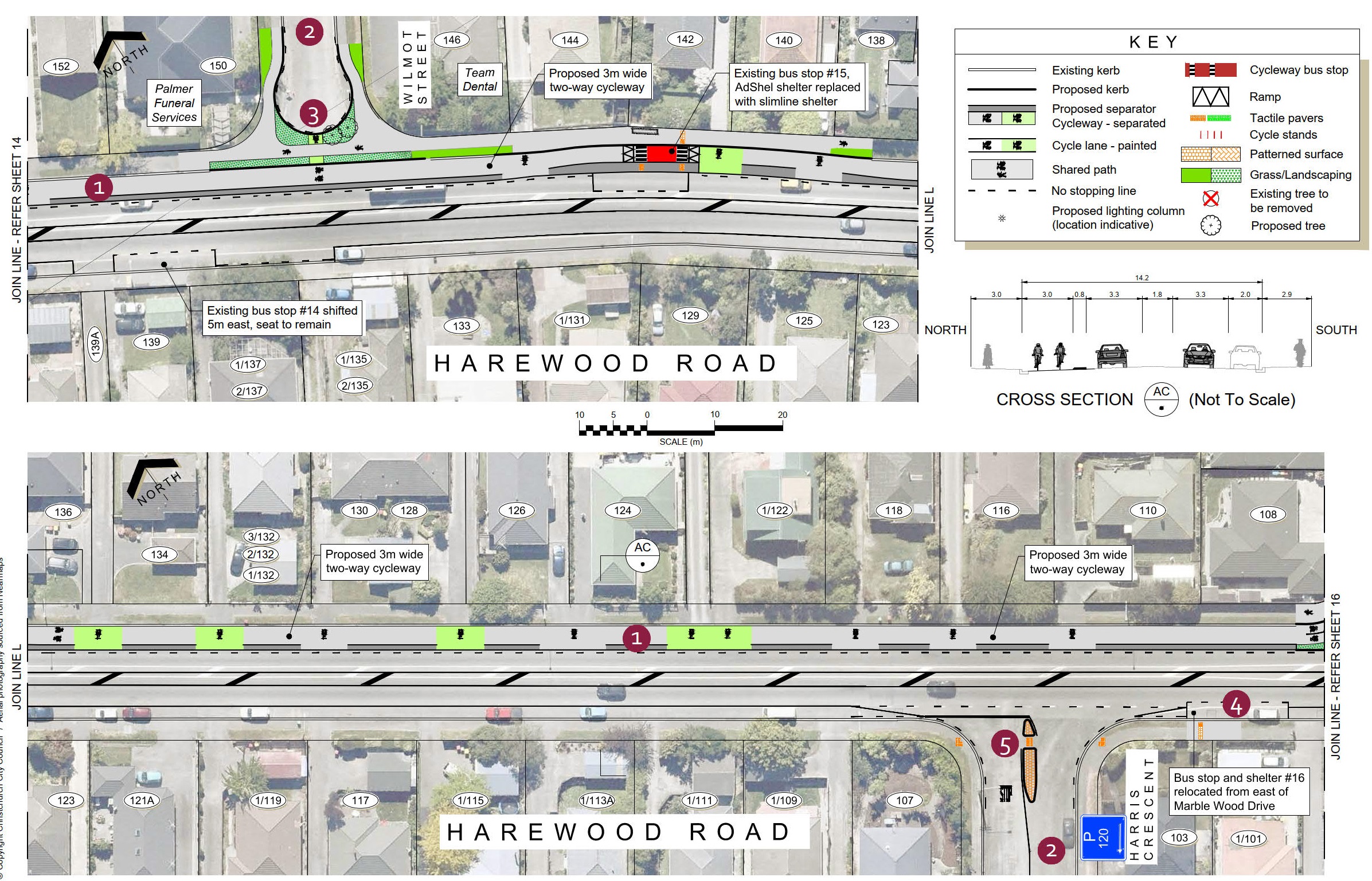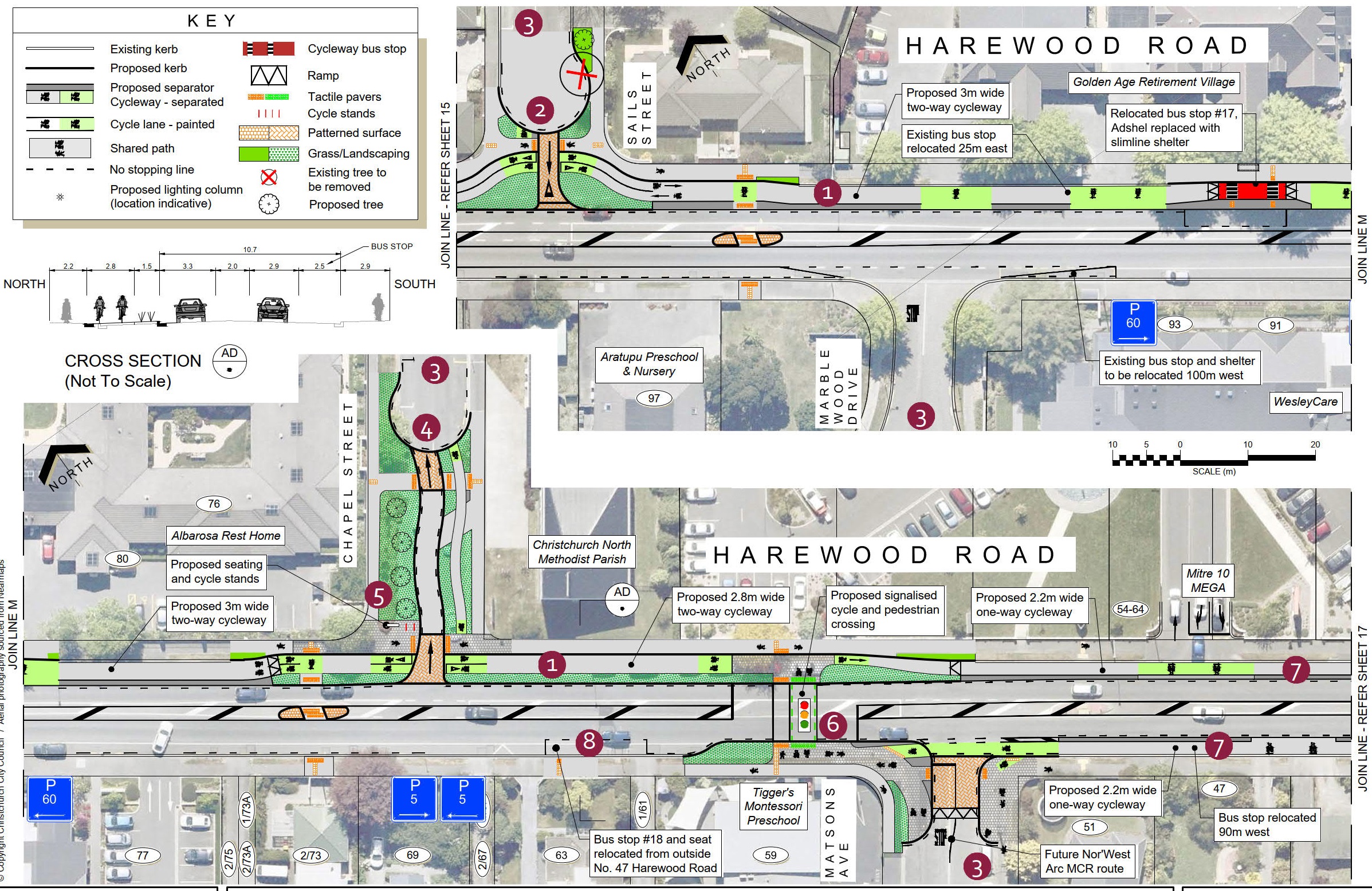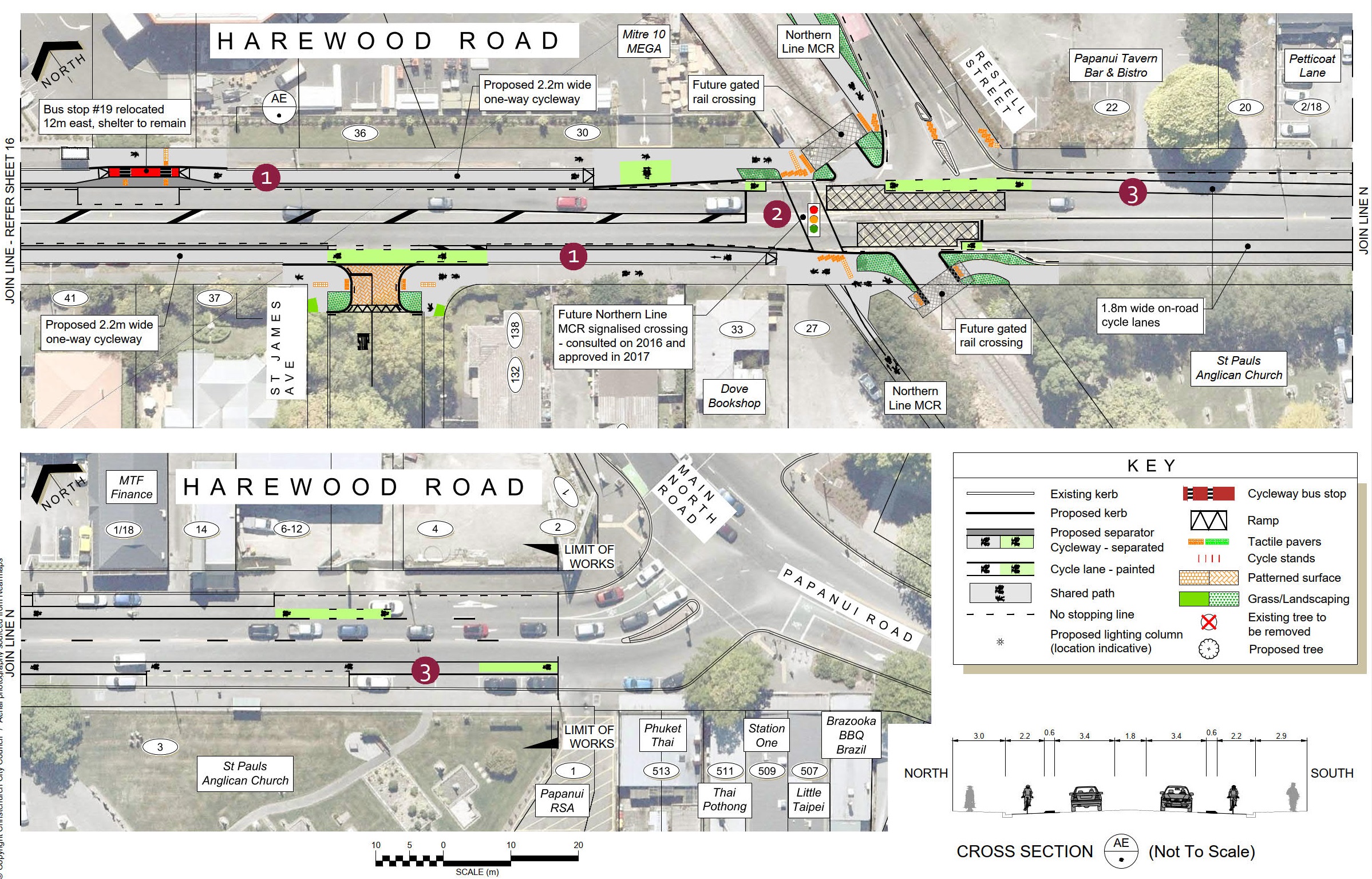We’re seeking your views on plans for improved cycling facilities as part of the Wheels to Wings – Papanui ki Waiwhetū Major Cycleway.
Share this
Consultation has now closed
Consultation on Wheels to Wings - Papanui ki Waiwhetū Major Cycleway has now closed. People were able to provide feedback from 25 January 2021 to 8 March 2021. A second round of engagement was held from 27 October 2021 to 17 November 2021 seeking further feedback on changes made to the design following the first consultation.
During both consultations we heard from 1434 individuals and groups. You can read their feedback in the July 2021 update below and also find out how this influenced the Hearings Panel recommendation(external link).
October 2021 update
We're holding three community information days to share with you what we heard during the consultation, our responses, the changes based on your feedback and further information on the proposed cycleway (including other options we've looked at). You are able to book your spot at one of these sessions and view new updates here(external link).
August 2021 update
We’re postponing the Wheels to Wings – Papanui ki Waiwhetū cycleway information days due to Covid-19 restrictions. We apologise for the inconvenience and we’ll look to reschedule as soon as possible.
We were planning to hold the information days on Thursday 2 and Friday 3 September.
It’s really important that we have a conversation with the community about the changes we’ve made and the different design concepts looked at, so we’re waiting until we can have these discussions in person.
As there has been a high level of engagement with this project it is important that we have the information days when people feel comfortable attending and have the time to consider the information. There will still be an opportunity to give further feedback as planned on the additional design work we’ve done when we hold the information days at a later date.
The other meetings to be rescheduled are:
- a briefing for the hearings panel;
- a community board workshop; and
- a hearing to consider oral submissions and make a recommendation to the Urban Development and Transport Committee.
July 2021 update
Consultation on Wheels to Wings – Papanui ki Waiwhetū Major Cycleway has now closed. People were able to provide feedback from 25 January to 15 March.
During this time we heard from 1348 submissions from individuals and groups. Many submitters have lived, or worked, in the area for a long time and have provided us with very detailed feedback. Thanks again for taking the time to consider the cycleway proposal. [insert number of responses] You can read their feedback below.
Themes of the feedback
Submitters who support the cycleway identified better safety for people biking, a safe route for children to get to school and the positive impact on climate change as their key considerations.
Submitters who don’t support the cycleway identified loss of parking, increased traffic congestion as a result of reducing four lanes to two and the cost of the project as their key issues.
Other issues raised by those not in support include:
- Safety – property access, driver behaviour and cycleway design
- Safety concerns at Harewood/Greers intersection
- Bishopdale roundabout – design of the roundabout and trees
- Access for emergency services
- Bus stop changes
- How the wider network will function (including Langdons Road)
- Alternative route suggestions and design options
There was widespread support for signalising the Harewood/Gardiners/Breens intersection.
Submissions
Business and organisations submissions(external link)
Individual submissions(external link)
Attachments to submissions (external link)
Wheels to Wings – Papanui ki Waiwhetū will provide a connection for local cycling trips in the Harewood, Bishopdale and Papanui suburbs to destinations including schools, shops, businesses and recreational facilities. It will also connect to cycling facilities further afield.
At its western end, Wheels to Wings – Papanui ki Waiwhetū will connect with the Johns Road cycle and pedestrian underpass, linking through to the commercial areas surrounding the airport, and to McLeans Island Road via the Johns Road shared path. This will be a good connection route for the large number of people working in the commercial area near the airport.
At its eastern end, Wheels to Wings Papanui ki Waiwhetū connects directly to the Northern Line cycle route and the future Nor’West Arc cycleway which is currently planned along Matsons Avenue (this will be consulted on later in the year).
The Wheels to Wings – Papanui ki Waiwhetū route can be divided into the following six sections:
- Whitchurch Place, Waimakariri Road, and Harewood Road up to Nunweek Boulevard Widening of the existing shared paths and construction of a two-way separated cycleway between Kilmuir Lane and Nunweek Boulevard, along with improved road crossings and intersections.
- Harewood Road from Nunweek Boulevard to the Bishopdale Roundabout One-way separated cycleways on each side of the road. This will require the removal of one traffic lane in each direction along the four-lane section of Harewood Road and the removal of some on- street parking.
- Bishopdale Roundabout New traffic signals at the east and west ends of the Bishopdale Roundabout will provide crossings for people cycling and walking through the roundabout and across Harewood Road, as well as controlling vehicles coming into the roundabout from Harewood Road.
- Harewood Road from the Bishopdale Roundabout to Greers Road A two-way separated cycleway is proposed on the northern side of Harewood Road. This will require the removal of adjacent on- street parking and one traffic lane. Additional on-street parking will be provided on the southern side of the central median.
- Harewood Road from Greers Road to Matsons Avenue A two-way separated cycleway is proposed on the northern side of Harewood Road, removing the adjacent on-street parking. Some restrictions to vehicle access at side roads are proposed.
- Harewood Road from Matsons Avenue to Northern Line One-way separated cycleways are proposed on each side of Harewood Road. This will result in the removal of on-street parking on both sides of the road.
Key changes:
- Harewood Road reduced from four lanes to two lanes.
- New traffic signals at Harewood/Gardiners/Breens intersection and Wooldridge/HarewoodRoad intersection.
- Traffic signals at each end of the Bishopdaleroundabout.
- New signalised crossings at HarewoodPrimary School, Nunweek Boulevard, and Harewood Road near Matsons Avenue.
- Changes to vehicle access on Wilmot Street, Sails Street and Chapel Street at Harewood Road.
Route maps
Map 1 Waimakariri Road end of Harewood Road [PDF, 11 MB]
Map 2 mid section of Harewood Road [PDF, 10 MB]
Map 3 east end of Harewood Road [PDF, 8.5 MB]
Changes to road layouts along the route have been proposed to improve safety for everyone. These changes include new signalised intersections and crossings, and safety improvements to existing intersections.
The four-lane section of Harewood Road is proposed to be reduced to two lanes to make space for cycling and on-street parking. This will also encourage lower speeds and make the road safer for turning drivers and pedestrians to cross. There will be additional lanes at some
intersections to maintain the traffic capacity along Harewood Road.
We’re signalising the Harewood/Wooldridge and Harewood/Gardiners/Breens intersections, partially signalising the Bishopdale roundabout and upgrading the Greers/Harewood intersection. These changes allow for the cycleway and help to improve safety overall.
We’re proposing to cul-de-sac Wilmot Street at Harewood Road, make Sails Street exit only onto Harewood Road and make Chapel Street entry only from Harewood Road. This will improve safety by reducing the amount of traffic turning across the cycleway.
A new signalised crossing outside Harewood Primary School and an extension to the school speed zone are proposed to improve school access.
Parking
We have tried to minimise the removal of on-street parking, however the competing demands for road space mean that some on-street parking will be removed along the route.
The design proposed was chosen to minimise the loss of on-street parking while maintaining safety for people cycling.
In areas of high parking demand we are proposing time-restricted parking on Harewood Road and nearby side streets to help ensure convenient parking is available.
Street lighting
Street lighting will be upgraded along the route to make the cycleway safer and more comfortable to use after dark. This will include the installation of new street lights where the current lighting levels do not meet the requirements for a cycleway or other changes to the road. This will require some new street lights to be installed, at locations to be confirmed in future stages of the project as the design progresses.
Trees
A total of 21 trees are proposed to be removed as part of this project in order to provide space for the cycleway and traffic lanes, improve visibility, and where the trees may pose a risk to people walking or cycling. A total of 56 new trees are proposed to be planted along the route, as shown in the detailed plans, however these are subject to confirming underground services at these locations.
The eucalyptus and oak trees in the Bishopdale Roundabout are proposed to be removed. A shared path is proposed within the roundabout island, and the eucalyptus trees can pose a risk to path users from falling branches. The risk of this is increased due to the removal of several adjacent trees to fit the new path and turning traffic lanes. The remaining oak trees need to be removed as they are interdependent on the surrounding trees, leaving them at risk of becoming unstable as other trees are removed.
Replacement trees are proposed in the roundabout, which include exotic species alongside the path to provide fast-growing shelter, with natives in other parts of the roundabout.
Plans are below the table
|
Plan number |
Features |
| 1 |
Whitchurch Place and Waimakariri Road
|
| 2 |
Harewood Road - 750 to 714
|
| 3 |
Harewood Road - 690 to Watsons Road
|
| 4 |
Harewood Road - 658 to 586
|
| 5 |
Harewood Road - Nunweek Park to 547
|
| 6 |
Harewood Road - 547 to 519
|
| 7 |
Harewood Road - Crofton Road to Copenhagen Bakery
|
| 8 |
Harewood Road - Gardiners Road, Breens Road intersection New traffic signals at the intersection with Gardiners and Breens Roads, approved by Council in 2019, are incorporated into the cycleway design. 1.8-2.2m wide one-way separated cycleways run along each side of Harewood Road, removing a traffic lane in each direction. |
| 9 |
Harewood Road - 404 to 364
|
| 10 |
Harewood Road - 364 to 322
|
| 11 |
Bishopdale Roundabout
|
| 12 |
Harewood Road - 250A to 214
|
| 13 |
Harewood Road and Greers Road intersection
|
| 14 |
Harewood Road - 188A to 154
|
| 15 |
Harewood Road - 152 to 108
|
| 16 |
Harewood Road (Sails Street to Mitre 10 MEGA)
|
| 17 |
Mitre 10 MEGA to Papanui Road
|
We are developing a network of 13 major cycleways all across Christchurch linking shopping centres, businesses, schools, parks and popular recreation destinations all across Christchurch.
Cycleways are a proven way to improve the health of a city, reduce congestion, build stronger local economies and reduce the long-term costs of infrastructure. They are also a key part of our plan to reduce carbon emissions.
The cycleways we have built so far have been well used. A morning count of people biking into the central city showed that 20 per cent more people were biking in March 2020 than a year earlier. This increase follows a pattern of yearly increases since we began building a
network of major cycle routes around the city.
The Major Cycleways are different to other cycle lanes around the city. They are designed to cater to people who don’t feel comfortable riding on the road.

